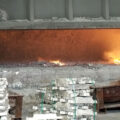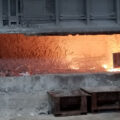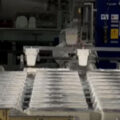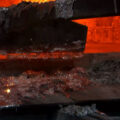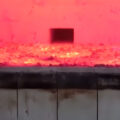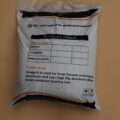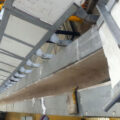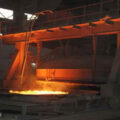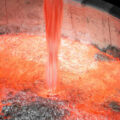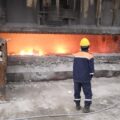A large amount of aluminum liquid is sucked into the vacuum ladle from the electrolytic cell and transported to the foundry shop to be injected into the mixing furnace. After the aluminum liquid is mixed and stirred, slagging and degassing, and chemical composition inspection, it is cast into aluminum ingots or rolled. Aluminum plates, round ingots, slabs or other shapes of finished or semi-finished products. In the casting production process, due to many factors, such as smelting, refining slagging, oxidation, etc., molten aluminum will experience varying degrees of burnout. How to control the molten aluminum burning loss in the casting process is very important for reducing metal loss, increasing the production rate of enterprises, and achieving good economic results.
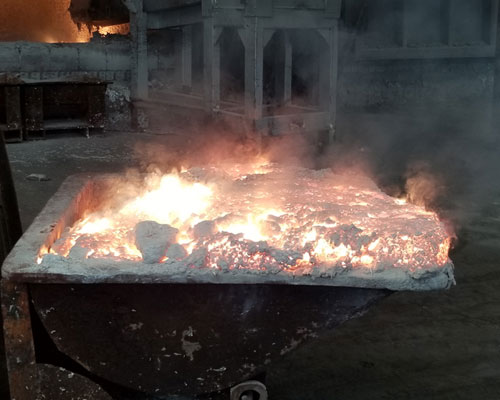
The main factors that affect the oxidative burning loss of the molten aluminum are the temperature of the molten aluminum, the oxygen content and the contact time between the molten aluminum and the air.
(1) The temperature of the molten aluminum delivered from the electrolysis workshop is too high. The melting point of aluminum is 660 ℃, the temperature of the raw aluminum liquid sucked into the vacuum ladle from the electrolytic cell is about 950 ℃, the temperature when the aluminum liquid is injected into the mixing furnace is about 850 ℃, and the pouring temperature is 690 to 730 ℃. There is a superheat of about 150°C between the temperature of molten aluminum in the furnace and the pouring temperature. Such a large degree of superheat is one of the important reasons for the burning of the aluminum industry.
(2) The heat preservation time of molten aluminum is too long, and the contact time with air is too long.
(3) The solid cold material added to the mixing furnace is not clean, contains oil, moisture, and sand, etc., which accelerates the oxidation and burning of the molten aluminum.
(4) The type of energy used for the heat preservation of the mixing furnace affects the burning loss of the molten aluminum.
(5) The method of stirring the molten aluminum in the furnace affects the burning loss of the molten aluminum. Manual mixing not only has poor mixing uniformity and long mixing time, which results in a large disturbance of the molten aluminum surface and serious oxidation and burning of the molten aluminum, and the working environment of the operators is harsh, which poses safety hazards. Although the stirring time of mechanical stirring is greatly shortened, and the contact time between the molten aluminum and the air is shortened, the disturbance caused by the mechanical equipment to the molten aluminum is much greater than that of manual stirring. In addition to the obvious improvement of the labor intensity of the operators and the operating environment, there is no improvement in reducing the burning loss of the molten aluminum.
(6) The molten aluminum brought out by slagging off is also a major component of the loss of metallic aluminum.
(7) During the casting process, the flow trough from the furnace eye to the pouring position of the molten aluminum is long, causing serious oxidation of the high-temperature molten aluminum. This stage has the largest amount of slagging in the entire casting process.
(8) The drop from the ladle to the ladle is too large, and the molten aluminum forms a turbulent flow when it enters the ladle, and is in full contact with the air, causing the molten aluminum to oxidize and cause burnout.
(9) The inability to sort and return the aluminum flakes, aluminum slag, etc. along with the oxidized slag in time is also an aspect that causes the loss of molten aluminum.

